The CBM 8032 computers used for this project are the grandfathers of the successful C-64, and directly descend from the mighty Commodore "PET 2001" series. Unlike the C-64 they had no sound chip and neither color nor pixel graphics, just text and symbols. They were used in labs, in offices and for education. They are iconic objects of the beginning of the personal computer area, and they are driven by the same CPU which is also used in the Apple I and Apple II computers.
This chip, a MOS 6502, was deliberately designed to be a `affordable` microprocessor, and it hit the market in 1976.
The Commodore CBM 8032 itself was released in 1980, at a point in computer history, when a lot of groundbreaking work was done that shaped the world we live in. The invention of the microprocessor a decade earlier ultimately lead to such diverse results as game consoles, digital synthesisers and smarter washing machines.
The development turned hippies into computer nerds, and later into billionaires, it had impacts on popular culture on many levels from cinema to poetry, from music to graphic design.
Hardware : Graphical Possibilities, Sound
By programming the
sequencer, the graphics- and sound -routines directly in
machine language, the code which is understood by the microprocessor itself, it is possible to get video and sound out of a CPU running at a clock speed of 1 MHz. When programming in machine language, there are no layers of interpretation in between the code written, and what the computer does with it. The code literally directs the data flow through the chip.
Equipped with a 6502 and 32kBytes of RAM, the CBM 8032 is several ten thousand times less powerful than any machine today.
It also only supports a very limited type of graphical display: 25 lines of 80 characters, displayed on its green CRT screen.
Each screen position can display one of 256 possible letters and graphical symbols as defined by Commodore’s PetASCII character set [see screenshot above]. The CBM 8032 AV project is exploring this unique quality.
The CBM 8032 also has extremely limited possibilities to create sound via a single 1bit sound output channel, that is more a hack to allow simple audio feedback for user actions.
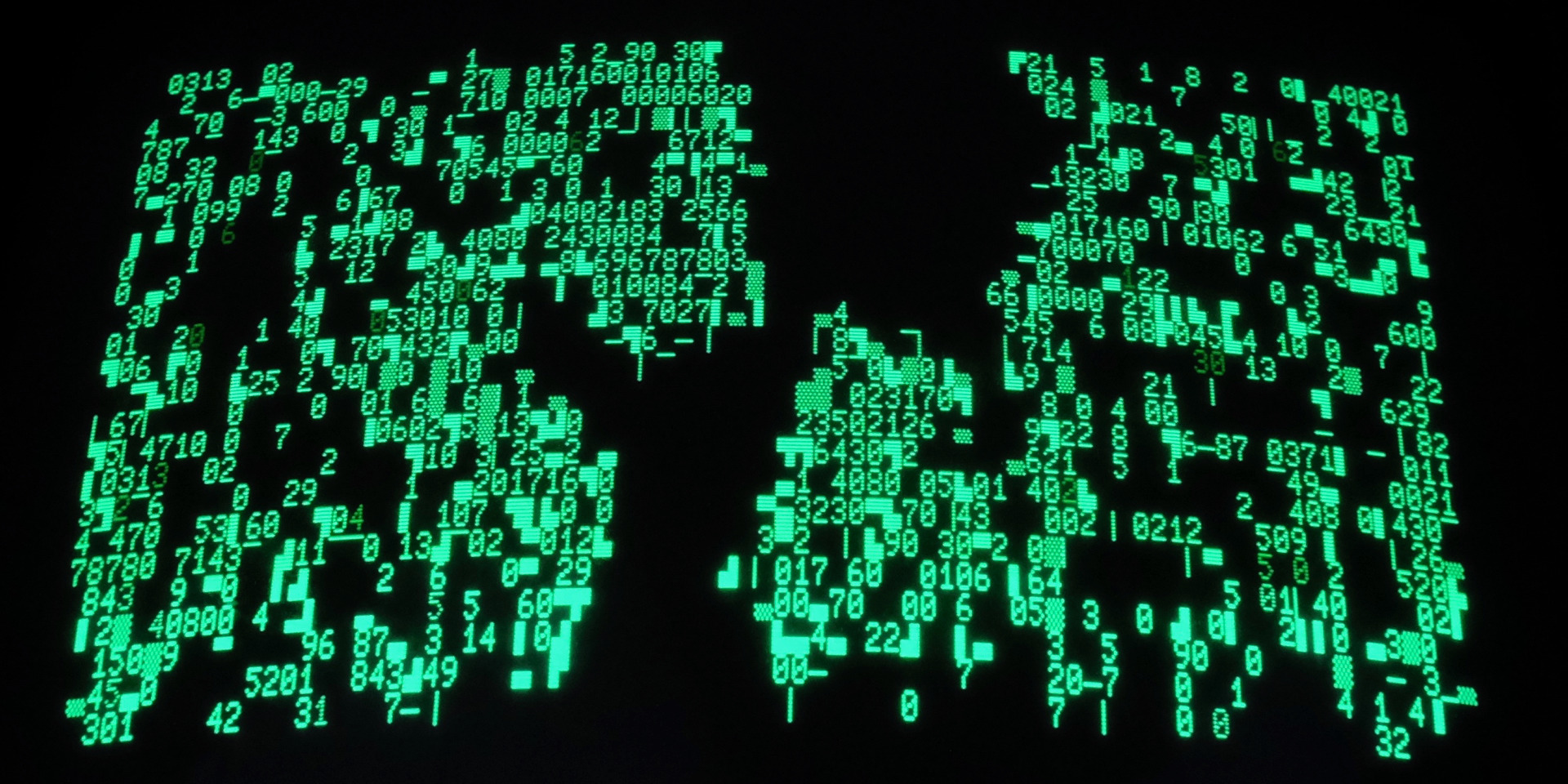
Why?
I was a teenager in the 1980s, in a family of engineers, and amazed and curious about technology. My first practical encounter with a computer was with a smaller version of the CBM 8032, the CBM 4016, also based on the MOS 6502 CPU, which belongs to the last generation of (8 bit) microprocessors that could still be directly programmed by human beings without the aid of other computers or software packages. A printed book with a list of opcodes and registers was sufficient.
When I look at circuit diagrams of machines built during that period, I experience a time travel to an era in which developers had to came up with amazingly elegant solutions for problems, since they had to deal with very limited resources. The computer code and the hardware represents the Bauhaus theme of 'form follows function' out of necessity. There is amazing beauty in this.
I experience it, when coding the graphics and sound routines for the 8032 series project. When I started in 2016, I was convinced there is a chance to create something that resonates with me and is artistically valid. Because of the reduction, because of the raw-ness, because of the timeless beauty of green characters on black background. Because there is no state-of-the-art technology of today involved at all.
The realisation of the 8032 AV project included many steps, it forced me to learn 6502 machine language, to understand the circuit board design of the 8032, to put myself inside the heads of the people who invented that machine.
It required building new hardware around it.And it required thinking about the generation of sound and graphics in terms far more abstract than with any contemporary tool.
I quickly learned it also requires collaboration, the task of writing all the software and building all the hardware additions is too much for one person.
I found amazing contributors: Anna Tskhovrebov, Mark J-K, Ralf Suckow, Sebastian Wolf, and many more who helped making this idea become reality.
The CBM 8032 AV project is as much a technological exercise as an artistic research project. It is impossible to separate one from another and this is partially what makes it special and rewarding.
The attempt to use forty year old computers to create a concert work seems irrational and counter intuitive at first glance. Why putting an enormous effort into pushing an outdated technology to the limits? Why not exploring the offerings of 2019 instead? During the three years of growing occupation with the idea and execution of the project these questions became essential and in multiple moments of doubt difficult to answer. Yet, a certain fascination for the topic and a deep sense of satisfaction when ever a little milestone had been achieved kept the artist and his team running.
Art.Science.Technology
And science needs intuition to work, relies on the ability to think the previously unthinkable. Building computers and programming them is no exception. Whilst working on the CBM 8032 AV project we had to involve ourselves deeply with the architecture of the hardware we are using, we had to gain an understanding about signal flows, states, connections and timing sequences.
We had to learn programming those machines on the lowest possible level of human - computer interaction, in machine language and assembler, turning formal commands ultimately into a sequence of bits in RAM, ready to be executed directly by the CPU. We were forced to think in a level of abstraction, deeper and more reduced than in any modern programming environment.
All that could be perceived as tedious and totally ridiculous in 2019, but there is a conceptual clarity inherent in this way of thinking that enforces to apply a similar rigid logic to the project on a larger scale.Artistic decisions had to be derived from the palette of possible options, in a dialogue with the available technology from 1980, and by doing so also in a dialog with the people who invented these systems.
At the end each human - machine interaction is a human to human interaction, since humans built the machines in the first place. The smaller the total number of people involved in key decisions about their designs, the more personal that type of abstract interaction gets. The CBM 8032 was small enough in scale to be understood and constructed by only a handful of people, and some of their decisions where highly personal, yet became sort of absolut. The PetASCII set of graphic symbols on which the cbm 8032 av project is based on is a great example for this. We work on the basis of a palette of shapes, someone designed in order to extend the possibilities of the system without making the hardware more complex. And now, forty years later, we make use of them and they become the foundations of our own artistic expression.
The Sky is the Limit
The work on CBM 8032 AV changed my way of thinking about programming. The extreme limitations and simplicity of the 6502 microprocessor turns it into a Swiss knife once mastered. We learned that even in such an environment, the sky is the limit once a certain threshold of knowledge is exceeded. By being able to completely take over a computer system to do nothing but running our own code, clock cycle per clock cycle, one million times per second, we gain an experience of power that is very different from being a guest on a contemporary environment where hundreds or thousands of processes run at the same time, most of them unnoticed by the user.
And then there are the specifics of ancient technology that even outperform current standards in some regards.
Our sound routines are feeding directly two eight bit DA converters, and we have no concept of a fixed sample rate. If the process is simple enough, we can produce a stream of samples with 100kHz sample rate or more. We are able to produce very specific textures with that. And the longer we were working with the green cathode ray tube ('CRT') displays, the more we became aware of the beautiful smooth and soft decay of brightness when a character or pixel is turned off, and the extreme difference between illuminated parts and darkness.
Monochrome CRT displays are amazing, and we lost that specific quality on our modern retina displays.
This project has many details and properties which makes it unique, simply because its inherent structure only allows for doing things in a certain way, or produces a specific aesthetics from within.
The role of the artist is to embrace this and to interact with it.The creation of this project involved many people, either because they were working with the artist in the atelier on it, or by remote collaboration, or by providing helpful insight into details on their websites, in the books they wrote about programming in assembler or the mailing lists they do maintain. Too many to mention all of them. Still: thank you !!!!
Robert Henke: concept, art direction, systems architecture, early graphics routines, sound routines, audiovisual composition, live performance
Anna Tskhovrebov: real time graphics routines, sequencer routines
from Hacker News https://ift.tt/2uGhMBV
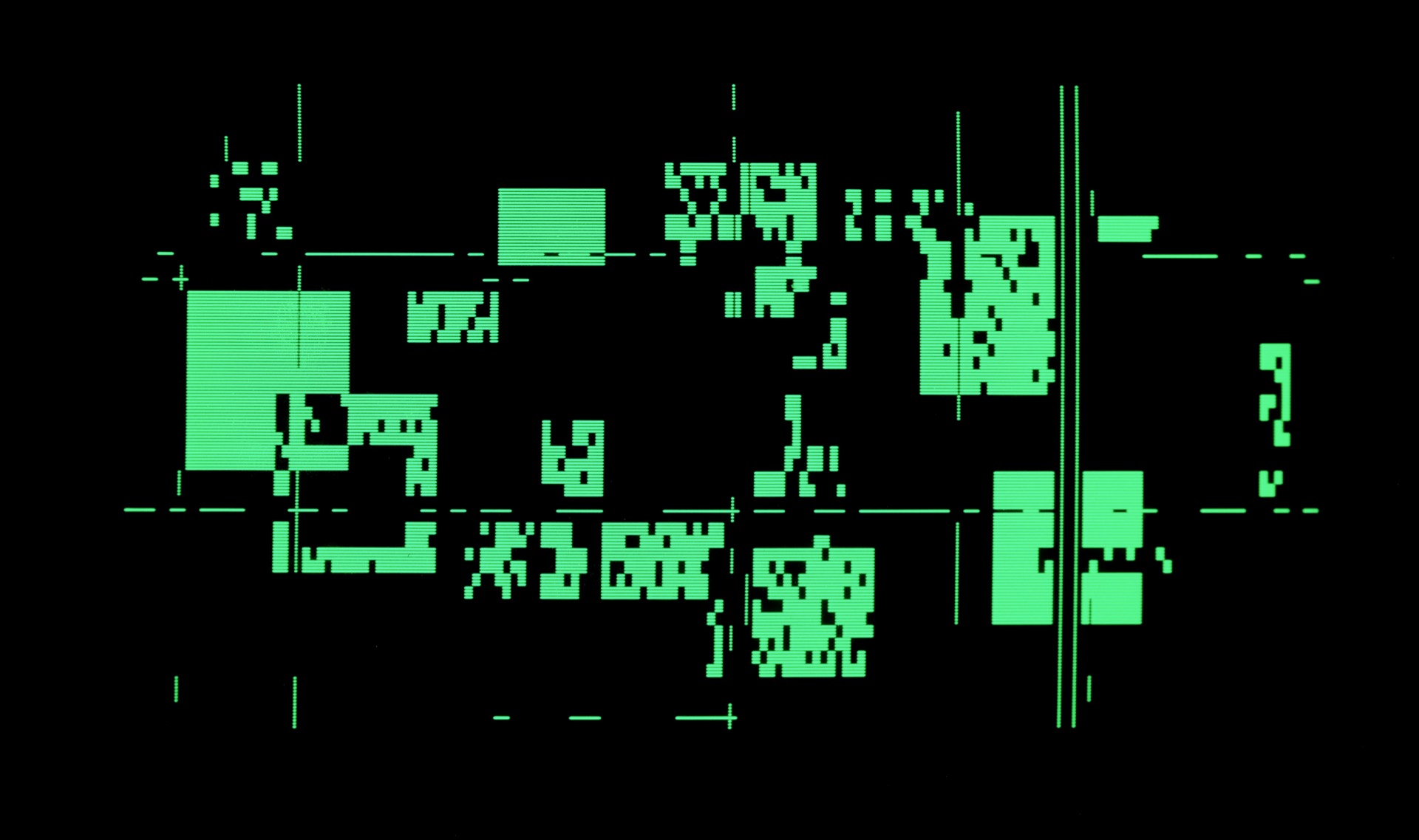
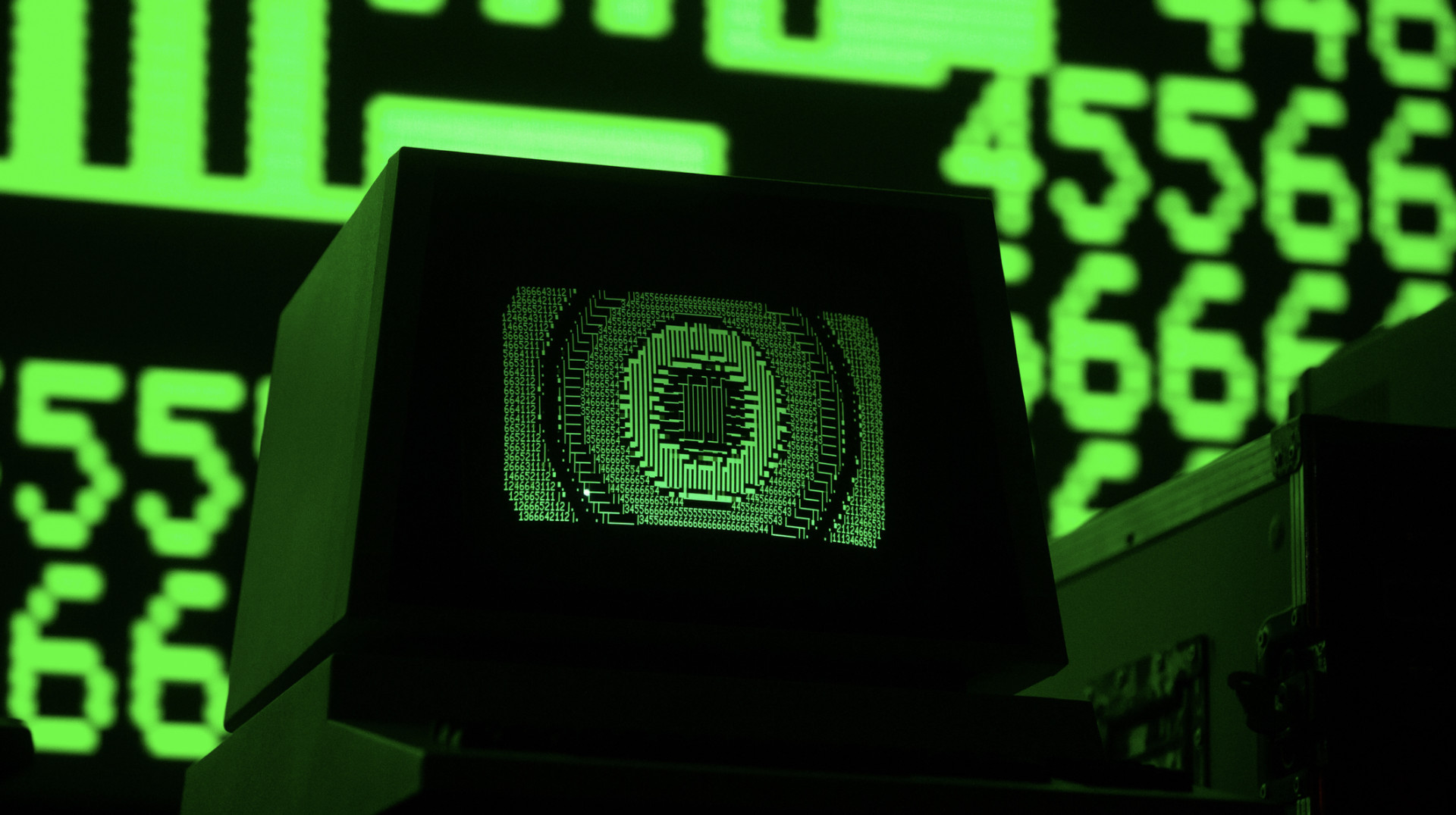
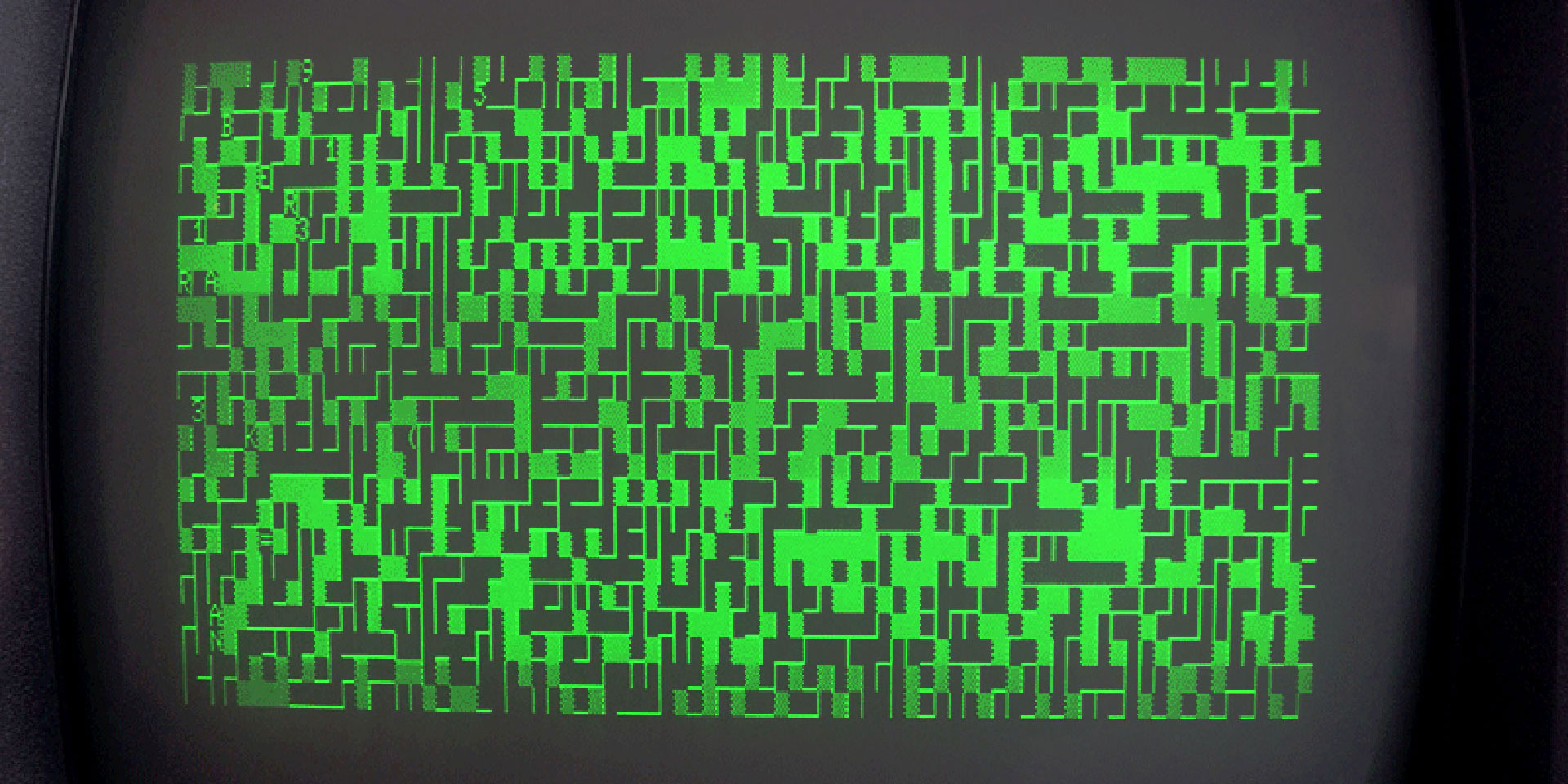
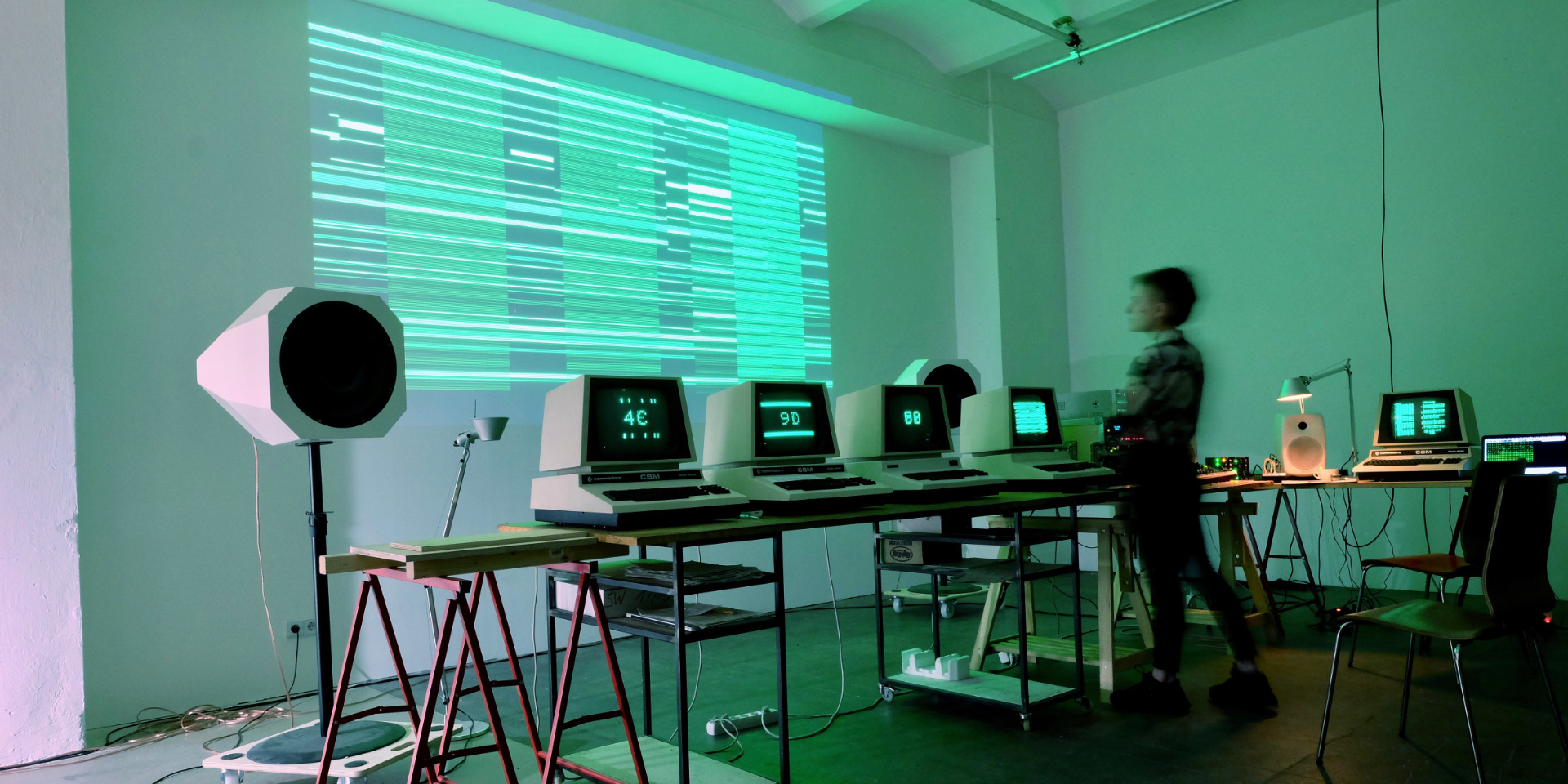
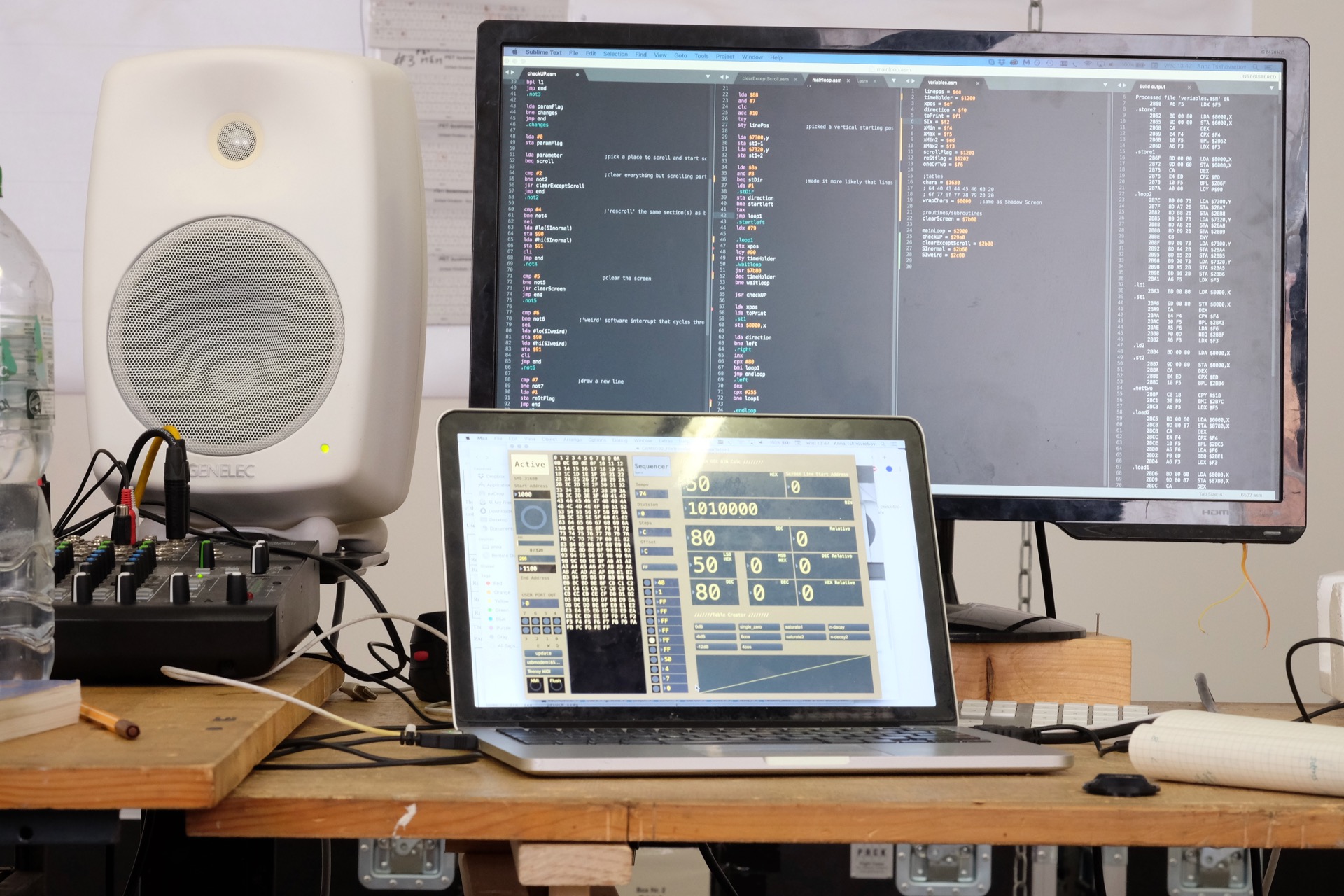
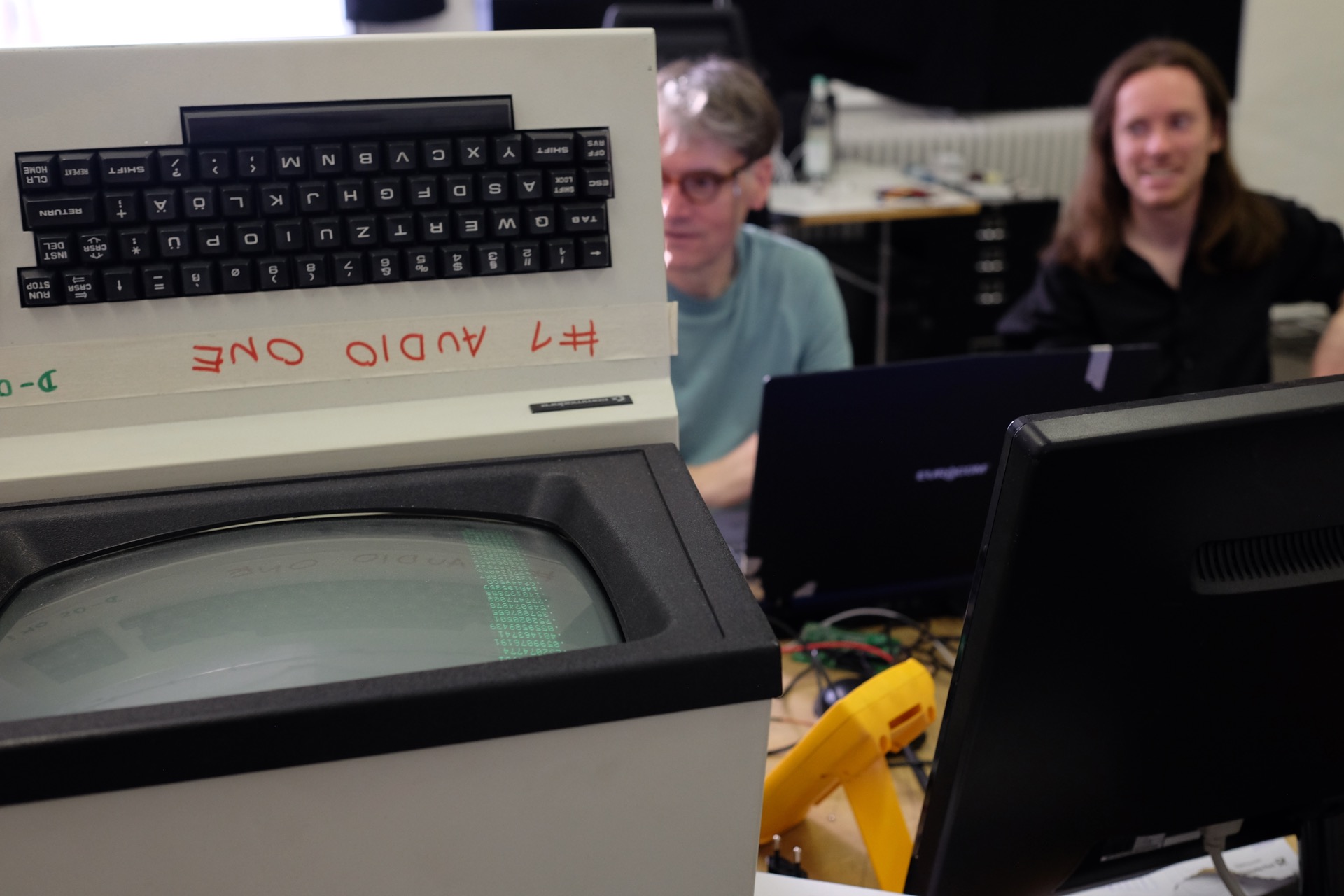
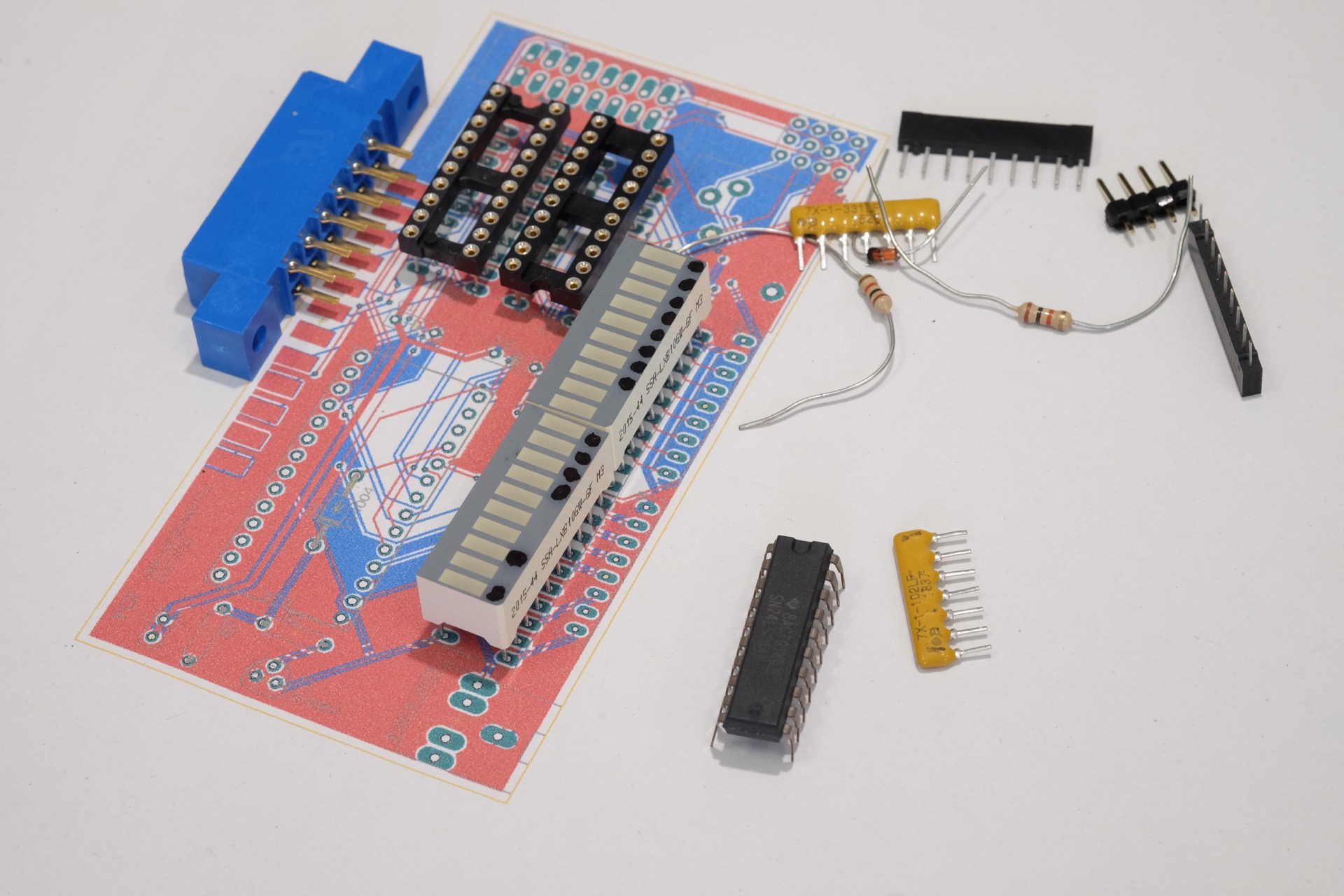
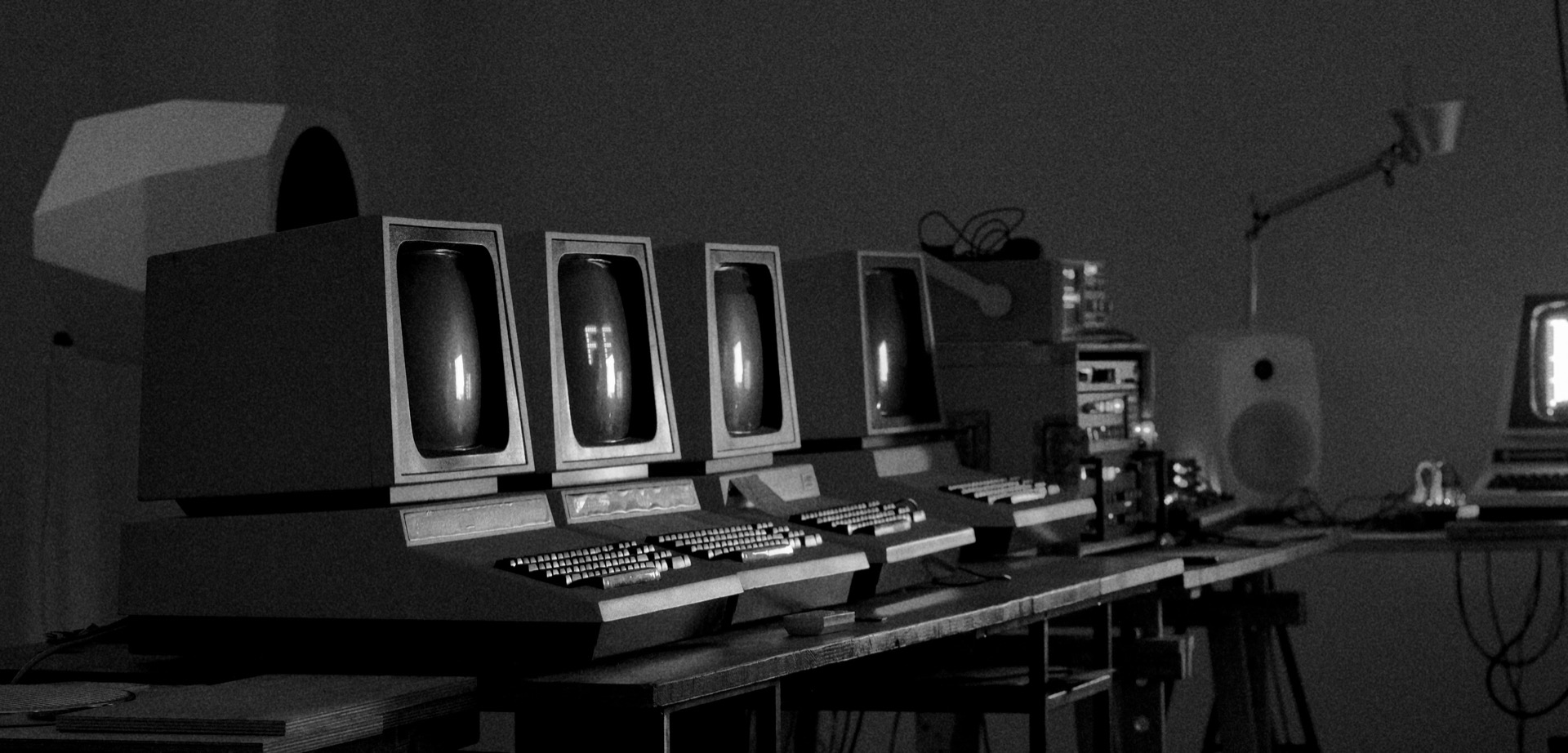
No comments:
Post a Comment
Note: Only a member of this blog may post a comment.